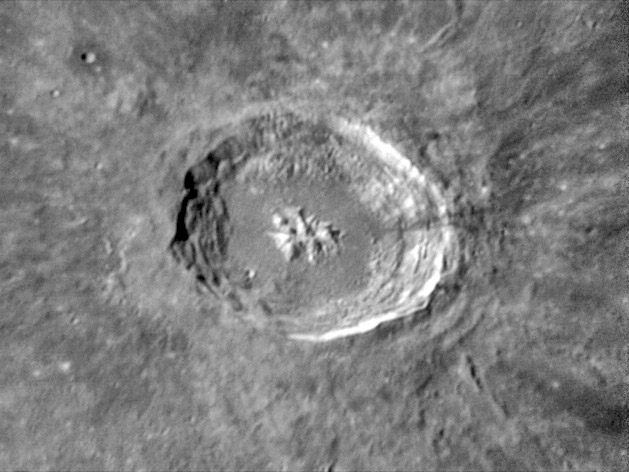
image by Damian Peach
Craters are like people. Both are formed by a process that has been repeated billions of times, but each one is unique. Craters don’t have DNA, nor do they have mothers and fathers, yet they have variations, both significant and subtle. Aristillus is a crater that looks pretty typical but it has its own peculiarities. Its clump of central peaks differs from the more typical one or two peaks, looking like a cluster of triangles whose apices point inward. The inner wall is pretty standard for this diameter crater (55 km) - a series of terraces, which have collapsed along the north side, yielding an unstructured mound of rubble that inched out a little onto the floor. A remarkable dark streamer extends from the floor up the east wall and over the rim. This dark ribbon divides into two and continues about to the bottom of the outer rim. It looks like a piece of dark ejecta that was excavated and draped across the crater; a high Sun view demonstrates that it is quite dark material - either mare basalts or pyroclastics. It seems like the dark ribbon starts at the top of the lowest terrace with some dark material perhaps falling towards the floor. If it does originate at the terrace it is very strange - seeming less like a streamer of ejecta. Unfortunately the source region occurs right at a boundary of two Clemetine swaths, one of which is not sharp. This is a feature that needs high resolution imaging with higher lighting to learn more what it might be,
Technical Details:
Sept 22, 2005. 14″ Schmidt Cassegrain. Lumenera LU075M CCD camera.
Related Links:
Rükl plate 12
Damian’s website
Yesterday's LPOD: Crater Chains and Unknown Rille
Tomorrow's LPOD: Dead Romans
COMMENTS?
Register, Log in, and join in the comments.



